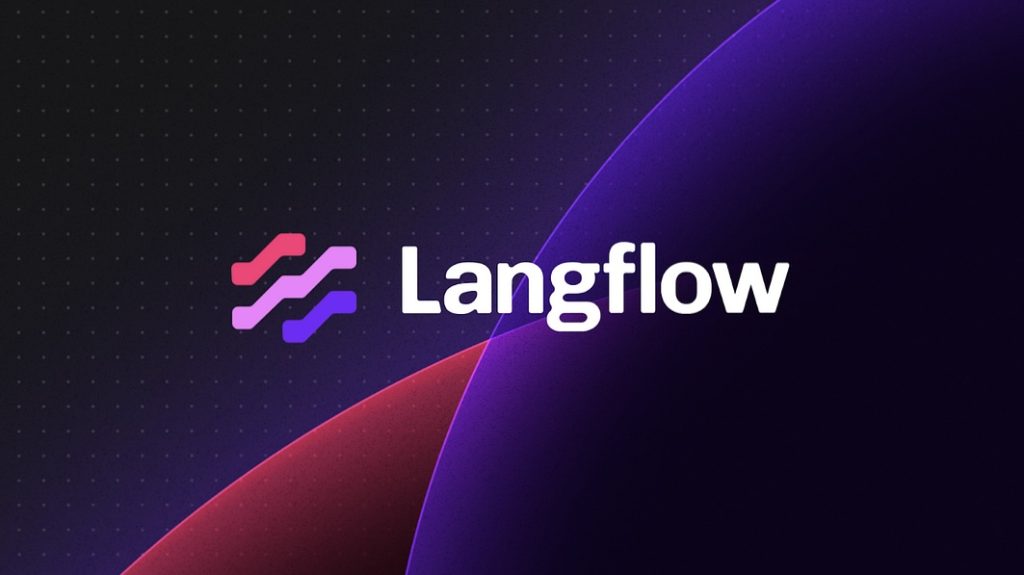
Langflow is an open-source visual programming framework built on top of LangChain. It offers a graphical interface for building and managing applications that use large language models (LLMs). With Langflow, developers (and even non-developers) can design, test, and deploy LLM-powered workflows using a no-code/low-code approach.
Why Langflow?
While LangChain provides powerful abstractions for working with LLMs, it still requires you to write Python code. That’s great for developers, but what if you want to prototype quickly, collaborate with a non-technical teammate, or just see how your pipeline flows from input to output?
That’s where Langflow comes in.
Langflow makes it easier to visualize your LangChain workflows, test components independently, and iterate on your applications without jumping back and forth between code and terminal. You simply drag and drop components (chains, retrievers, tools, agents), configure parameters, connect them, and run the whole workflow from one interface.
Features
Langflow provides a number of key features that make it an excellent companion for building with LangChain:
- Visual Editor – At its core, Langflow provides a canvas where you can visually connect nodes representing LLMs, retrievers, prompt templates, tools, chains, and more. This allows you to map out and tweak your application’s flow intuitively.
- No-Code/Low-Code Interface – Langflow abstracts away most of the boilerplate Python code needed to work with LangChain. You can get a fully working RAG (Retrieval-Augmented Generation) pipeline running without touching code—but if you do want to customize, you can export the code or inspect it anytime.
- Component Library – Langflow comes with a rich library of LangChain components, including LLMs (OpenAI, Cohere, HuggingFace, etc.), document loaders, vector stores (FAISS, Pinecone, etc.), retrievers, prompt templates, memory modules, and more.
- Real-Time Testing – You can test chains and components directly in the UI. Want to see how the LLM responds with a new prompt? Or how your retriever pulls documents? Just click “Run” and see instant results.
- Parameter Configuration – Each component comes with configurable parameters. Whether it’s the temperature setting of your LLM or the number of documents your retriever fetches, you can tweak values directly in the UI and see the effect immediately.
- Project Management – Langflow supports project-based organization. You can save workflows, clone and fork them, share them with teammates, and export them as JSON or Python.
Components
Langflow exposes most of the same building blocks as LangChain, including:
- Document Loaders – Load PDFs, websites, Notion pages, and other data sources for use in your RAG applications.
- Retrievers & Vector Stores – Hook up FAISS, Pinecone, ChromaDB, and others for semantic search.
- Prompt Templates – Create static or dynamic prompts that guide the LLM output.
- LLMs – Connect to GPT-4, Claude, HuggingFace models, and more.
- Memory – Add short-term or long-term memory to your apps for conversational experiences.
- Agents – Create intelligent agents that can use tools and make decisions dynamically.
Application
In a previous post, we wrote a legal reference RAG application that allows us to ask questions about the Revised Corporation Code. The workflow is composed of several steps and we had to implement the components in the workflow.
Let’s say you want to build a question-answering app using your own set of PDF documents. Normally, with LangChain, you’d need to write several lines of Python code, load the documents, chunk them, embed them into a vector store, write a retriever, connect to an LLM, and wire it all together.
In Langflow? Just drag and drop components, configure parameters (e.g., file to retrieve, chunk size, etc.), connect them, and hit run. That’s it.
You can also preview outputs at each stage, making it much easier to debug and fine-tune. Want to see which documents are being retrieved before hitting the LLM? Langflow lets you inspect that too.
Summary
If LangChain is the engine, Langflow is the dashboard—giving you full control and visibility to drive your LLM apps forward. Langflow builds on the power of LangChain, but lowers the barrier to entry for building with LLMs. Whether you’re prototyping LLM apps or just exploring AI development, Langflow makes it easy and intuitive with its drag-and-drop, no-code interface.